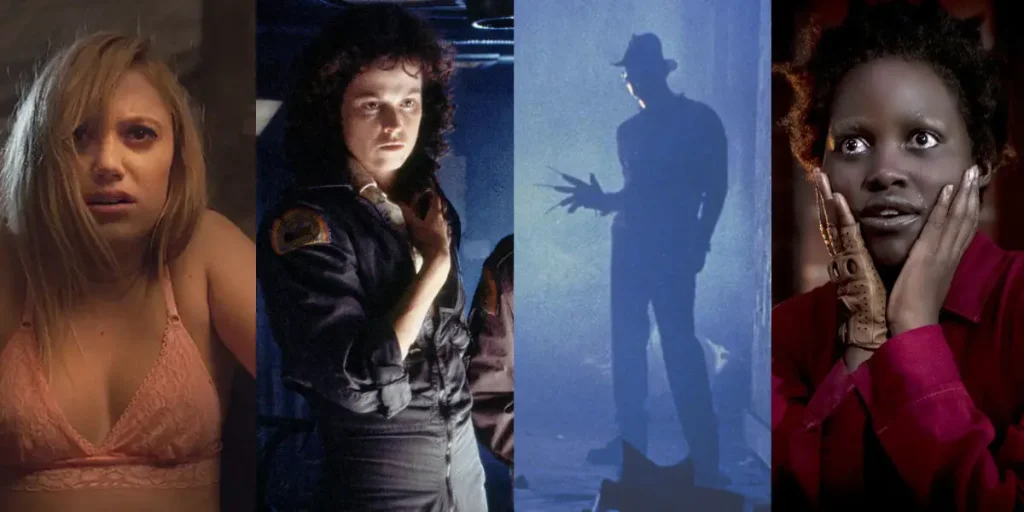Edge-of-your-seat, visceral thrills have made these reliable classics the 10 best horror thriller movies, ranked from scary to scariest.
In the best horror thriller movies, terror doesn’t lurk in shadows; it chases you through them. These films achieve their power through relentless scenarios where unlucky souls are stalked, sliced, and spooked by merciless slashers and ravenous creatures that feast on human flesh. Ranked from scary to scariest, these 10 films belong on every horror fan’s hotlist.
Note: This list focuses specifically on horror-thriller films; those that emphasize immediate physical threat and visceral scares through monsters, killers, and creatures. We covered horror-thriller-suspense films separately. Those films, like “Rosemary’s Baby,” lean more heavily into psychological tension and slow-building dread rather than the direct, confrontational terror featured here.
10. Scream (1996)
Director: Wes Craven
When a masked killer begins terrorizing the town of Woodsboro, high school student Sidney Prescott becomes his primary target in a deadly game where knowing horror movie rules might be the key to survival. Director Wes Craven’s meta-slasher emerged as a sleeper hit in late December 1996, doubling its $14 million budget and building on strong word-of-mouth as audiences flocked back for second (and third) viewings over the holidays and into the new year. More importantly, Scream revived the slasher genre after critics declared it dead in the late 80s and early 90s. With its self-referential humor reinventing the game even as it followed a tried-and-true formula, the film sparked a tidal wave of low-budget slashers (think Disturbing Behavior, Soul Survivors) that tried, and mostly failed, to prove they were sliced from the same creepy cloth.
By opening with Drew Barrymore’s (E.T.) shocking death, an all-bets-are-off move that kills the biggest star first, and following Sidney Prescott (Neve Campbell, The Craft) as a Final Girl who understands the rules, Craven establishes that anything can happen while balancing razor-sharp wit with genuine frights. Kevin Williamson’s tight script and Craven’s unimpeachable casting instincts give us a slick, self-aware funhouse of terror; one where the scares are every bit as potent as the punchlines. Don’t let six sequels (and two TV seasons) fool you: the original Scream still packs a pulse-hammering shock in every shriek.
9. It Follows (2014)
Director: David Robert Mitchell
Full Review: It Follows Review: Modern Low-Budget Horror At Its Best
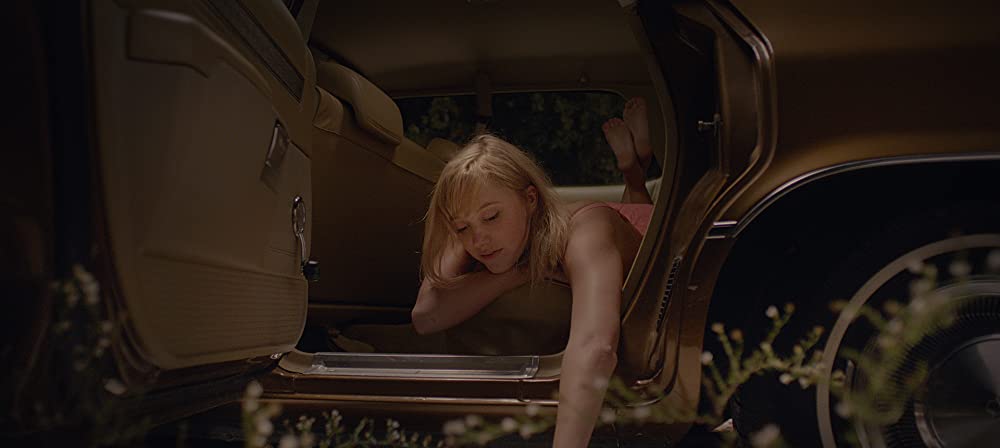
After sleeping with her boyfriend, teenage Jay (Maika Monroe) discovers she has been infected with a supernatural curse: a shape-shifting entity that will slowly but relentlessly pursue her until it catches and kills her, unless she passes the curse on to someone else. David Robert Mitchell’s supernatural stunner operates on this simple, terrifying premise: a deadly pursuer that moves at walking pace but will never, ever stop coming. The film’s Detroit setting, with its post-industrial landscape of abandoned houses and economic collapse, becomes a perfect backdrop for modern anxieties, while Monroe delivers a breakthrough performance as a young woman trapped between adolescence and a nightmare that literalizes sexual anxiety with devastating psychological precision.
Unlike most modern horror films that rely on jump scares, It Follows builds inexorable tension through patient cinematography and Disasterpeace’s synth-heavy score that channels John Carpenter’s best work. The film’s genius lies in its restraint: by making the entity visible only to the cursed, Mitchell forces audiences to scan every frame, turning us into paranoid accomplices in Jay’s terror. This is horror that burrows under your skin and stays there, transforming ordinary spaces—pools, suburbs, crowds—into landscapes of dread. It Follows doesn’t just scare you; it rewires how you see the world, making every slow-moving stranger a potential harbinger of doom. With Mitchell and Monroe set to reunite for the long-rumored sequel They Follow, audiences will soon discover whether lightning can strike twice in this chilling universe.
8. Alien (1979)
Director: Ridley Scott
When the crew of the commercial space vessel Nostromo answers an off-world distress call, they unknowingly bring aboard H.R. Giger’s biomechanical nightmare, a parasitic alien that uses humans as hosts before emerging as the perfect killing machine. Four decades after its release, Ridley Scott’s Alien remains a symphony in escalating dread, each frame crafted to still your blood, whether you’re watching a vintage print or a gleaming 4K remaster.
From Ian Holm’s inscrutable android Ash to Sigourney Weaver’s (Ghostbusters) Ripley, cinema’s blueprint for every badass heroine that followed, each crew member’s demise is a skillfully choreographed crescendo of terror. Scott’s background in advertising informed the film’s meticulous visual design, creating a template that influenced the ensuing decades of sci-fi horror. Dan O’Bannon’s gender-blind script gave Scott the freedom to cast the best actor for every role, and the result is a haunted-house thriller set in deep space where breathing feels like a luxury, if you can even summon the courage to try.
7. Poltergeist (1982)
Director: Tobe Hopper
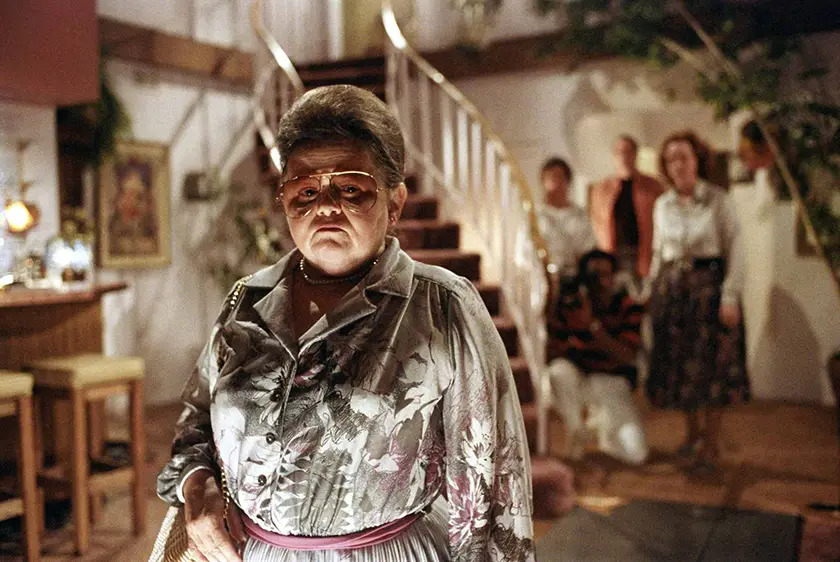
When young Carol Anne Freeling (Heather O’Rourke) vanishes into the static of her family’s television, literally pulled into the TV screen by supernatural forces, her frantic parents, Steven (Craig T. Nelson) and Diane (JoBeth Williams), discover their suburban home has become the epicenter of supernatural chaos. The vengeful spirits, disturbed by the house being built on their burial ground, have kidnapped Carol Anne and opened a gateway between worlds to do it. Poltergeist marries Spielbergian heart (he wrote it but couldn’t direct it due to his commitment to E.T., which was being shot down the street) with Tobe Hooper’s gift for sensational jolts.
From Zelda Rubinstein’s diminutive but unforgettably commanding medium Tangina to the living room’s television portal that serves as a gateway between worlds, each set piece builds toward the final banishment of malevolent spirits. The film’s production was shrouded in the mystery of Hollywood lore, with persistent rumors about whether Spielberg or Hooper actually directed it, adding to its allure. The eerie atmosphere deepened with the so-called “Poltergeist Curse”, a tragic series of untimely deaths among cast members that fueled decades of speculation about supernatural forces surrounding the production. Poltergeist may sport a PG rating, but its tree attack, rotting corpses, and clown doll sequence are indelibly scarring. It’s a tour de force in family horror that works every time: you root for the Freelings even as you scream for them to stay away from that blinking TV and call the movers
6. Us (2019)
Director: Jordan Peele
Full Review: Us Film Review: Jordan Peele Frightens Us Once More
Adelaide Wilson (Lupita Nyong’o, The Wild Robot) returns to her childhood beach house with her family for a vacation, only to find themselves under attack by their exact doppelgängers, underground duplicates of every American citizen known as “The Tethered” who have lived in a maze of tunnels, mimicking their surface counterparts’ every move. What begins as a home invasion thriller escalates into a nationwide horror uprising as these abandoned doubles seek to reclaim their place in the world above. Jordan Peele‘s sophomore shocker flips the mirror on modern America, and on our own reflections.
Nyong’o delivers a virtuoso, awards-worthy dual performance, trembling as protective mother Adelaide while embodying the merciless Red, her underground counterpart who speaks in a raspy whisper and leads the revolution through fear and fury. Winston Duke’s (Nine Days) Gabe channels every beat of domestic bliss before unleashing a primal survival instinct. Building on the social commentary that made Get Out a phenomenon, Peele weaves in cultural touchstones like “Hands Across America” to create deeper meaning. Behind each jump scare lies a breadcrumb of social commentary, from class division to generational trauma. By the film’s final, lingering shot, you’ll question which version of yourself you’d rather face at midnight.
5. A Nightmare on Elm Street (1984)
Director: Wes Craven
Full Review: A Nightmare on Elm Street Review: Don’t Fall Asleep
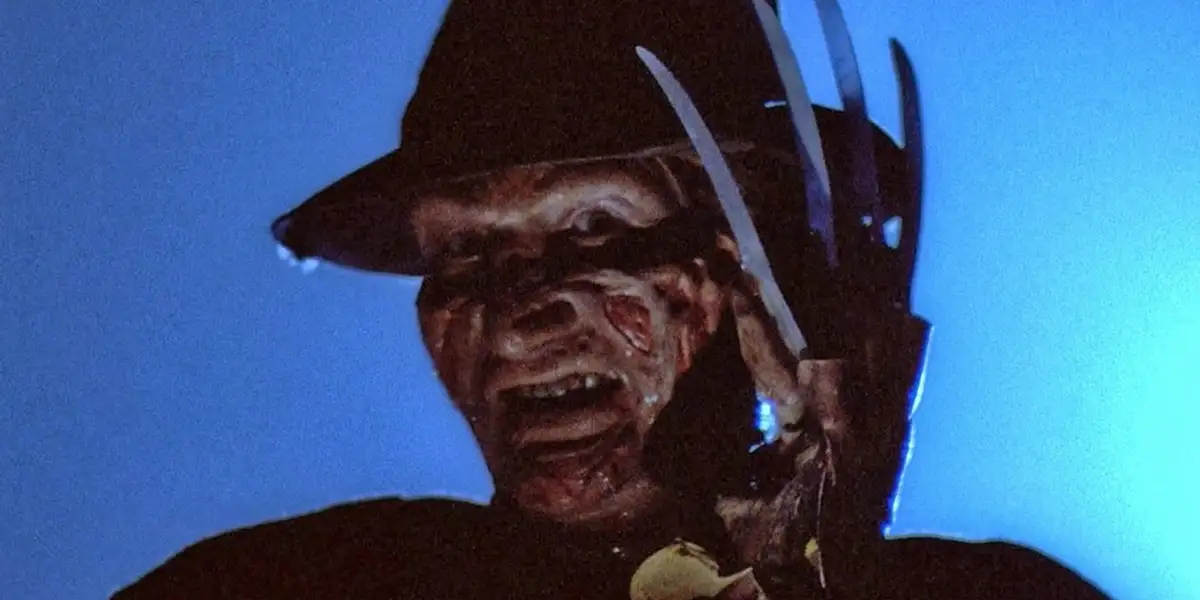
Teenagers on Elm Street Nancy Thompson (Heather Langenkamp, Wes Craven’s New Nightmare) and her friends (including a young Johnny Depp) discover that sleep itself becomes a death trap when Freddy Krueger, a child killer who was burned alive by vengeful parents, begins stalking them through their dreams with his razor-fingered glove. Writer/director Wes Craven cuts straight into our most vulnerable state, forcing us to fear the darkness behind closed eyelids. Krueger isn’t just a boogeyman; he’s a perversion of childhood safety.
Robert Englund‘s portrayal of Krueger balances burnt-flesh horror with Catskills comedian-style one-liners that would eventually turn the character into horror royalty. But in this debut, he is pure terror. The effects still look shockingly visceral, like Tina’s (Amanda Wyss) bedroom evisceration as she’s dragged across the walls and ceiling by invisible forces, proving that practical gore will always eclipse any CGI. With a $1 million budget, Elm Street‘s phenomenal box office success, along with the numerous sequels, helped establish New Line Cinema as “The House That Freddy Built.” This 1984 introduction to a horror icon spun nightmares that haunt long after the credits roll, reminding us that sometimes the scariest place is our own subconscious.
4. The Conjuring (2013)
Director: James Wan
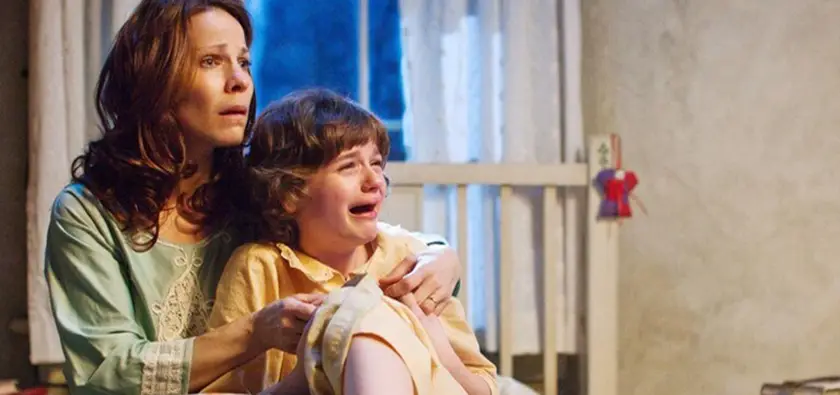
When the Perron family’s secluded Rhode Island farmhouse becomes a battleground between the living and the dead, paranormal investigators Ed (Patrick Wilson, Millers in Marriage) and Lorraine Warren (Vera Farmiga, The Many Saints of Newark) are called in to confront a malevolent presence tied to the property’s dark history of witchcraft and suicide. Drawing from the Warrens’ actual 1971 case files, The Conjuring earned its R rating for “disturbing violence and terror” alone, plunging viewers into escalating supernatural warfare.
Wan’s direction subverts the usual haunted-house tropes; each creak in the floorboards lands like a punch to the solar plexus. Farmiga’s steely, empathetic Lorraine serves as our spiritual anchor, while Lili Taylor’s (Mystic Pizza) Carolyn Perron channels every parent’s primal fear as the supernatural forces target her children. The basement séance, Taylor’s white dress against the oppressive darkness, our first introduction to the creepy doll Annabelle, each image is engineered for maximum dread. The film’s success spawned a massive horror universe, though the real-life Warrens’ controversial methods and claims of supernatural possession continue to divide believers and skeptics. Wan doesn’t just want screams; he wants breathless silence, and he earns both, turning purported true events into modern horror’s gold standard.
3. The Descent (2005)
Director: Neil Marshall
After a stunning prologue that will leave you reeling, Sarah (Shauna Macdonald) joins five friends for what should be a healing cave-diving expedition in the Appalachian backwoods. When adventure-seeker Juno (Natalie Mendoza, Moulin Rouge!) leads them into an unmapped cave system, the women become trapped underground and discover they’re being hunted by blind, flesh-eating creatures known as “crawlers” in a subterranean nightmare that makes the tight cave passages feel spacious by comparison.
The film’s all-female cast was revolutionary for the horror genre in 2005, proving that crushing confinement and fractured friendships can work as powerfully as any external monster. Marshall’s terror doesn’t come from jump scares alone, but from the psychological pressure of being buried alive and the breakdown of trust between friends hiding deadly secrets. The Descent delivers bone-deep scares that don’t just tingle your spine, they threaten to disintegrate it completely. Creatures with skeletal limbs and acute hearing snatch victims into the shadows, forcing your imagination to run wild with their off-screen fates. And just when you think you’ve surfaced from the nightmare, that final, breath-stealing ending—different in U.S. and U.K. cuts—leaves you gasping for daylight, questioning whether escape was ever really possible.
2. Jaws (1975)
Director: Steven Spielberg
Read also: What Makes Jaws the Perfect Fourth of July Movie
After a young woman’s midnight swim ends in a brutal shark attack, Police Chief Brody (Roy Scheider) wants to close Amity Island‘s beaches, but the Mayor refuses, fearing economic disaster. When the massive great white claims a young boy at a crowded beach in broad daylight and nearly kills Brody’s own son during the Fourth of July weekend, the chief finally gets authorization to act. Brody hires eccentric shark hunter Quint (Robert Shaw) and brings along marine biologist Hooper (Richard Dreyfuss) for a final confrontation aboard Quint’s boat, the Orca, setting up director Steven Spielberg’s ultimate showdown: three men and a fish in the vast open ocean.
Shot around a malfunctioning mechanical shark nicknamed “Bruce,” Jaws invents suspense through absence: we fear what we can’t see lurking beneath the surface. John Williams’s two-note motif became shorthand for panic; every swell of water now carries the promise of sharp teeth. The film didn’t just terrify audiences in the summer of 1975, it created the summer blockbuster model and forever changed how people think about beach vacations. Quint’s haunting monologue about surviving the USS Indianapolis shark attacks, delivered by Shaw in a knockout performance, still raises hairs with its vivid descriptions of floating sailors being picked off by sharks. Spielberg didn’t just make us terrified of the deep; he made us crave the terror itself.
1. The Texas Chainsaw Massacre (1974)
Director: Tobe Hooper
Full Review: The Texas Chain Saw Massacre (1974) Film Review
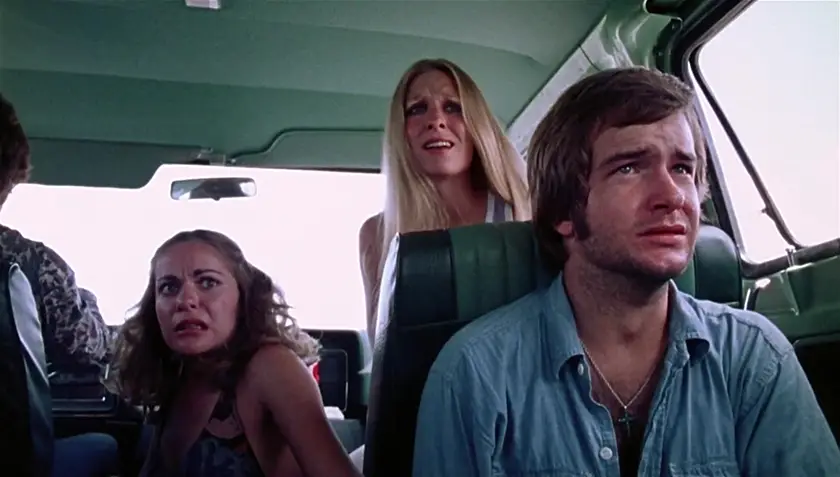
Sally Hardesty (Marilyn Burns) and her friends are driving through rural Texas to visit her grandfather’s grave when they pick up a disturbed hitchhiker, their first mistake in Tobe Hooper’s grim nightmare grindhouse feature, released in 1974. Eventually, Sally and her companions stumble into Leatherface’s (Gunnar Hansen) dilapidated homestead, a charnel house where his family of cannibals has been feeding on travelers for years, complete with rusty hooks, human bone furniture, and rancid flesh. The Texas Chainsaw Massacre doesn’t just bruise your nerves; it grinds them between its teeth in a savage fight for survival that pushes the boundaries of cinematic terror.
Hooper’s vérité documentary style was so convincing that the film was banned in multiple countries and went on to influence the entire found-footage horror movement decades later. His raw, unflinching approach traps you in that sweltering Texas heat, blurring the line between reality and nightmare. Minimal blood, maximum terror: the film’s crude sound design of chainsaw roars, ragged breathing, and metal scraping bone does more to traumatize than any splash of gore. From the surreal dinner tableau where the Sawyer clan forces Sally to join their grotesque family meal to her desperate final escape, watching the final fragments of her sanity erode, every moment is an exercise in pure, unrelenting dread. No sequel or remake has matched its primal potency or its ability to leave a sticky layer of sweat on your terror-stricken body. This is horror distilled to its rawest form, and it still slices deepest.

